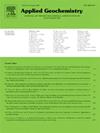We validated the recently updated Caltech Isoprene Mechanism (CIM), which represents the complex dynamics of isoprene peroxy isomers through repetitive O2 addition and dissociation reactions, using a dataset synthesized from two field measurements taken place in both urban and rural areas of East China. The dataset covers a large span of nitric oxide (NO) levels ranging from tens of ppt characteristic of clean rural air to tens of ppb typically found in the polluted urban environment. An observationally constrained zero-dimensional box model that incorporates the CIM mechanism was constructed to simulate the daytime profiles of methacrolein (MACR) and methyl vinyl ketone (MVK), two major first-generation products that account for over half of the total carbon oxidation flow of isoprene. A closer agreement with the measurements was found compared with the traditional mechanism that prescribes a fixed yield of MACR and MVK across all NO levels. This result demonstrates that the isoprene peroxy dynamics operate competitively in the area and play a governing role in the final distribution of isoprene oxidation products. The atmospheric implication is that, with effective measures taken to reduce pollutant emissions in East China, the prevailing chemical regime at play has evolved and implementing the updated isoprene mechanism into regional models will have a profound impact on the predicted radical cycling and ozone production of the local atmosphere.


